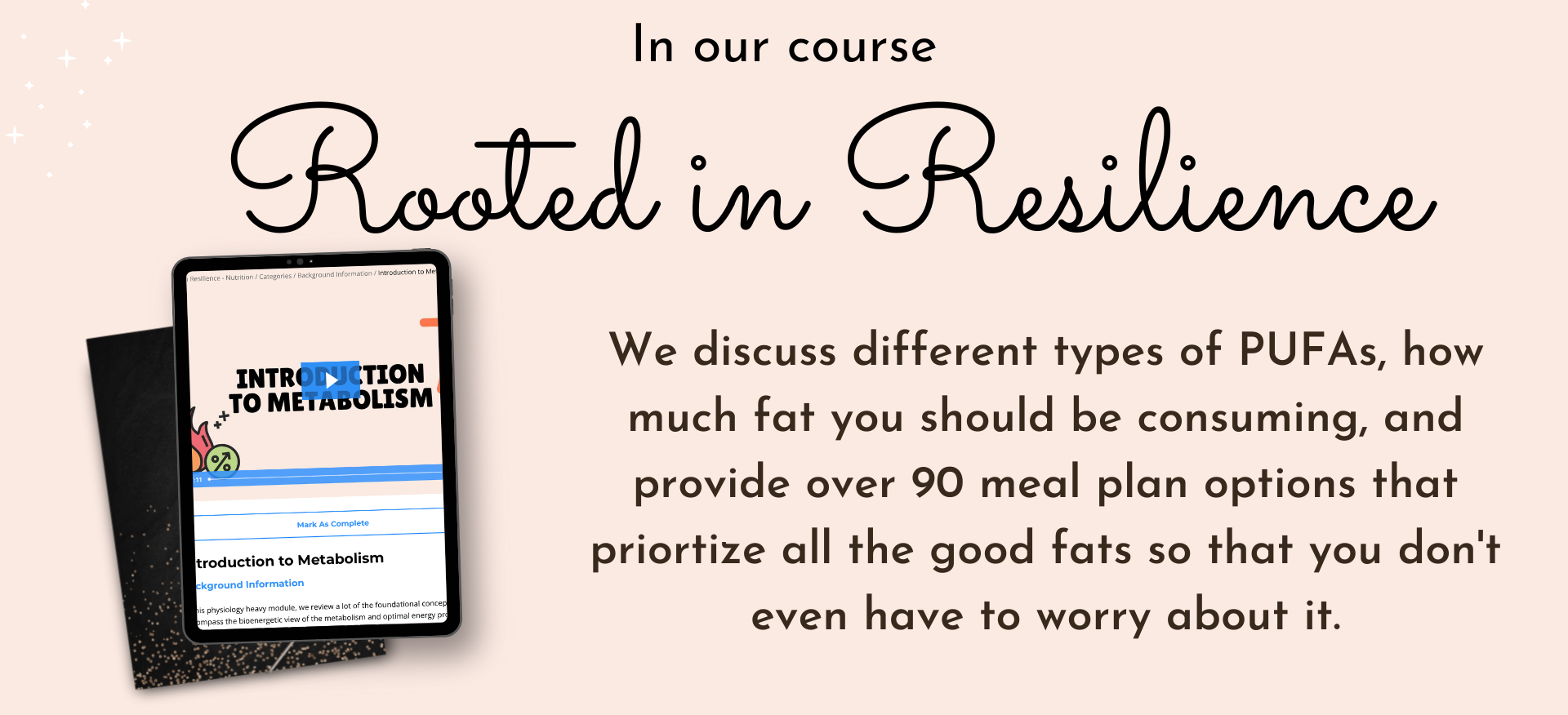The type of fat you eat makes up the type of fat in your body
Oct 26, 2022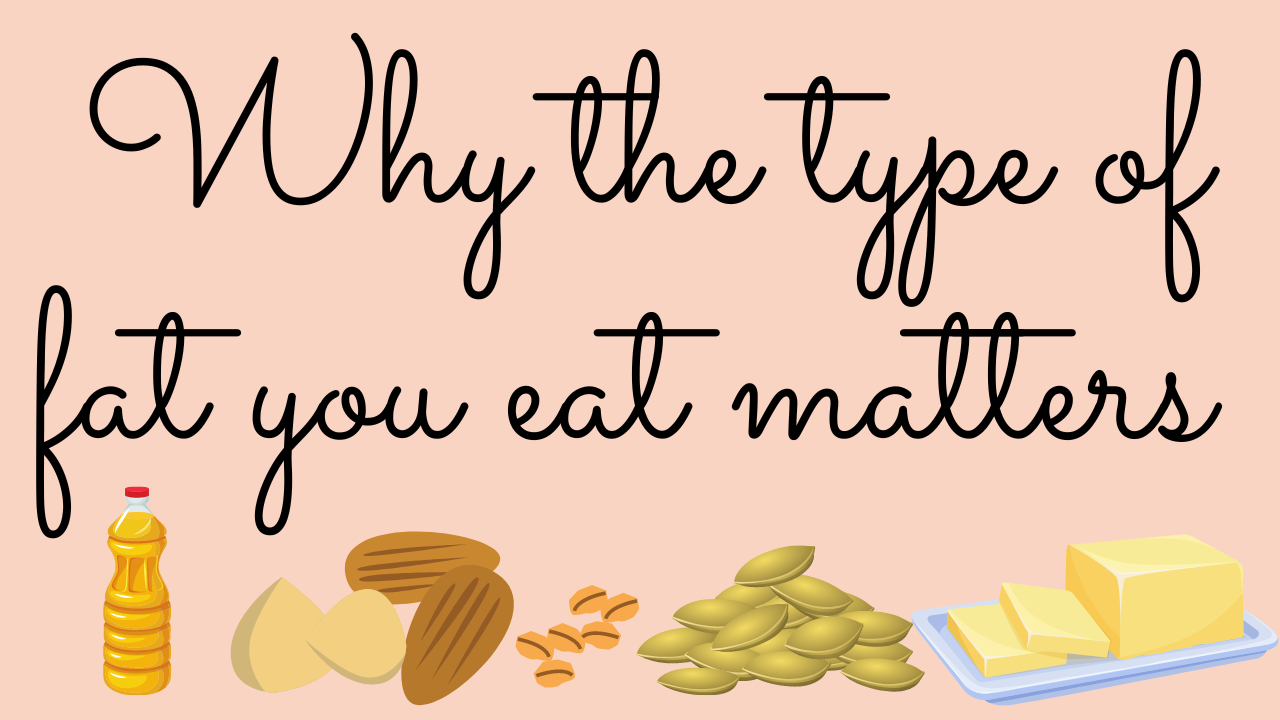
Did you know that the type of fat you consume impacts the type of fat you have in your body? And that it can take a few years to "switch" our fatty profile?

Yep, I have been pretty mindful of my dietary fat choices for over 4 years now. But it took me a while to get a lot of those fats high in vegetable oils out of my system after consuming all that 'I can't believe it's not butter!' growing up 🤦🏻♀️ ("When you know better, you do better" - Maya Angelou)
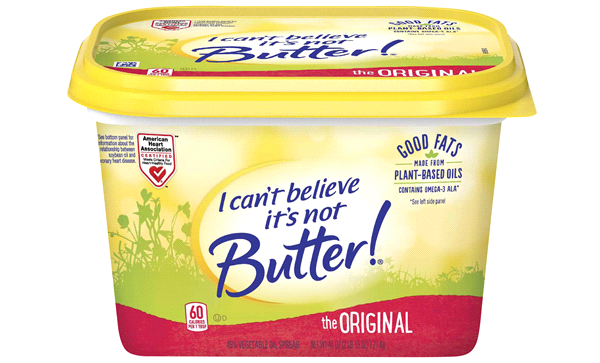
Before we discuss how the type of fat in humans has been changing since the 1960s, let's briefly review the types.
Fats are a group of chemical compounds that contain fatty acids - the building blocks of the fat in our bodies and the food we eat.
There are three main types of fatty acids, which differ by the number of double bonds. The more double bonds, the more unstable the molecule is (meaning, the more vulnerable it is to free radical attack (ref) - not what we want!!). The three main types include:
- SFA - saturated fats (no double bonds)
- MUFA - monounsaturated fats (1 double mond)
- PUFA - polyunsaturated fats (2 or more double bonds)
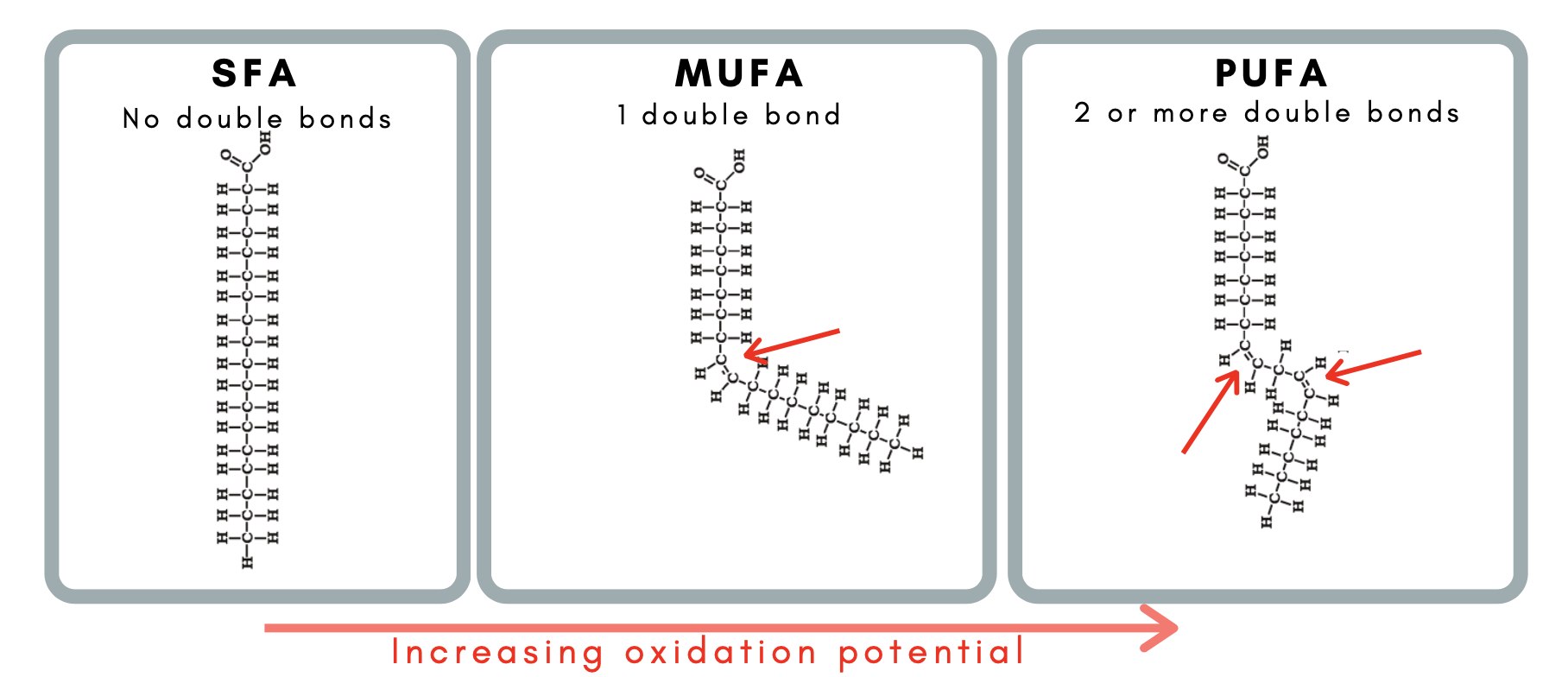
Now, all fats are a combination of saturated, monounsaturated and polyunsaturated. But some fats are more saturated (like animal fats), and other fats are more polyunsaturated (like vegetable oils).
Yes, Harvard still promotes high vegetable oil consumption since they are living in the 1970s and are still obsessed with cholesterol. (There are deep politics and lobbying involved in food production and promotion, but that rabbit hole is for another day).
Okay back to human fat tissue.
The fatty acid composition in your body is a dynamic system, and the type of fat in your body is impacted by the type of fat in your diet (ref).
We saw this with our chickens at our farm! By changing their dietary fat, we were able to change the fatty acid profile of our eggs.
Well, what has been the biggest dietary change in the American diet over the last 50-70 years?
Vegetable oils.
And what are vegetable oils high in?
Linoleic acid (LA), an Omega 6 polyunsaturated fat (PUFA).
The concentration of LA in humans is known to reflect dietary intake (ref, ref).
The amount of LA in human tissue has increased by 136% over the last half century. (ref)
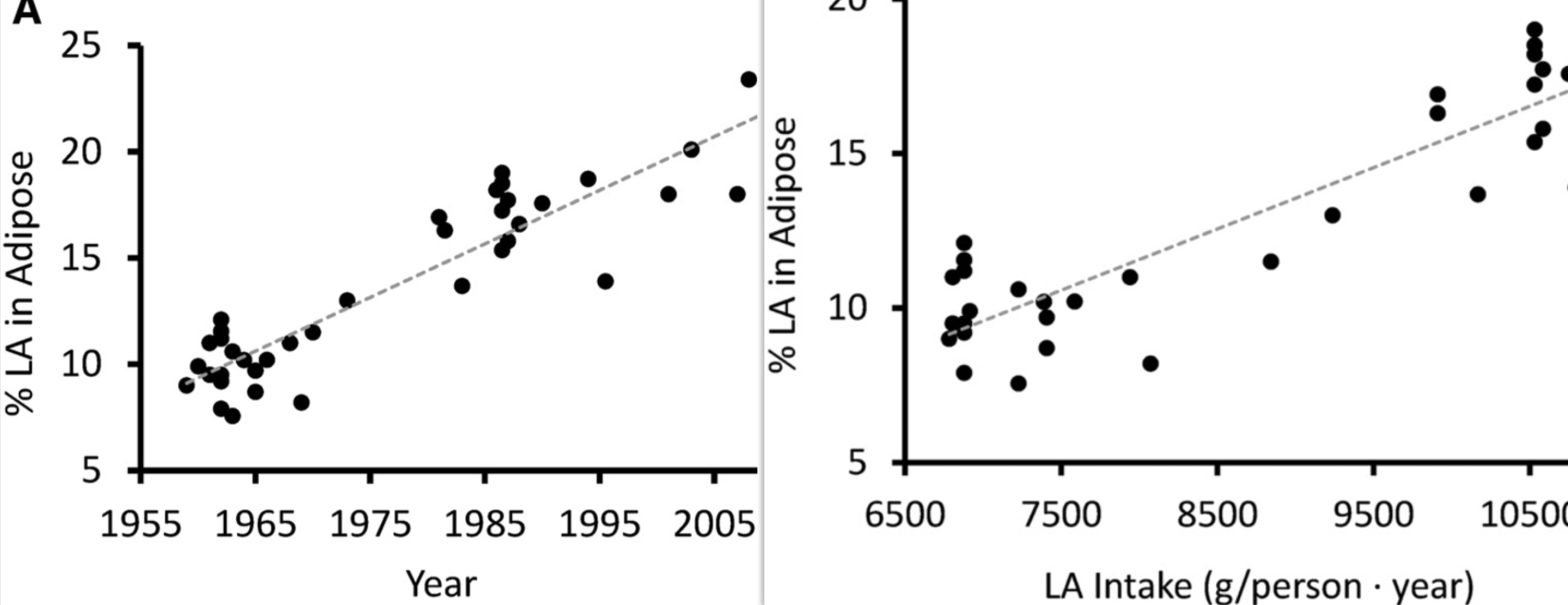
And this data (ref) is only through 2005. Imagine what the data looks like today with another rapid rise in vegetable oil consumption (image from Jeff Nobbs).
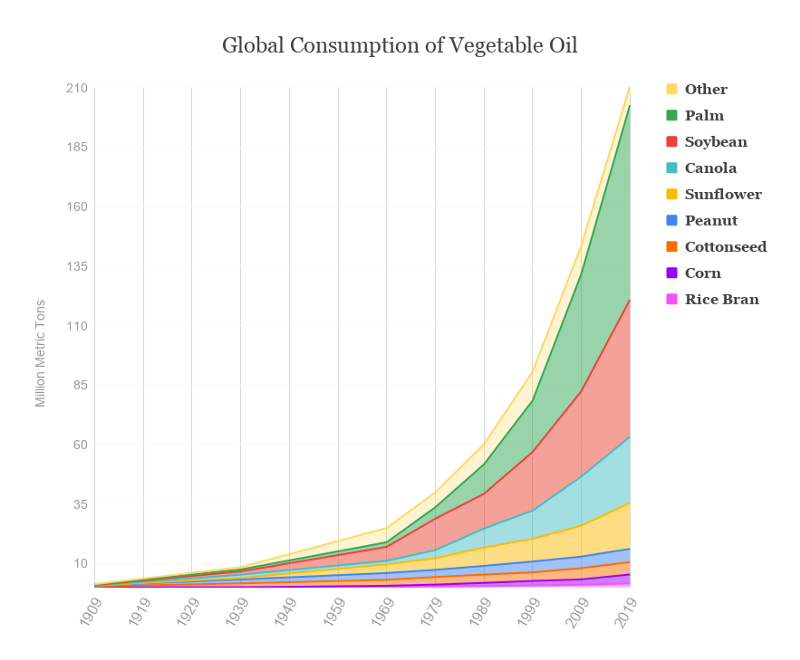
Why should we care?
The types of fat in our body impacts our health!
Many of the negative health implications of PUFAs are harder to find amidst mainstream propaganda, but excess PUFA consumption has been shown to:
- negatively impact thyroid health (ref)
- damage gut integrity by increasing gut permeability (ref, ref, ref)
- worsen COVID-19 outcomes (ref)
- and increase oxidation and cellular damage (ref)
(Amongst other health complications)
And these fats are being promoted by mainstream.
“Since the sixties, indiscriminate recommendations have been made to substitute vegetable oils, (high in n6 PUFAs and low in n3 PUFAs), for saturated fats. Moreover, significant changes in animal feeds and the food chain have been introduced [chickens & pigs fed a lot of corn & soy]. For example, the n6/n3 PUFA ratios in food commonly consumed in the American diet range from 10 to 41…Equally important, the requirement for linoleic acid (LA; 18:2 n6) for growth and development as a precursor of arachidonic acid and its metabolites has been significantly overestimated” (ref)
These dietary fats are also negatively impacting the health of the next generation, as the mothers' dietary habits impacts the fatty acid composition of breast milk. (ref, ref)
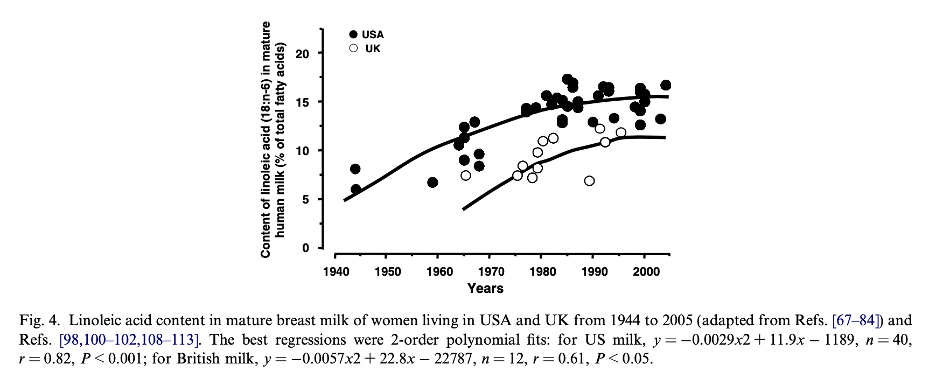
The point of sharing this information is not to generate FEAR.
We share this information to encourage you to be mindful of the types of fat you are consuming and to remove the fear associated with moderate amounts of saturated fats.
The goal is to not eliminate or completely avoid various PUFAs like linoleic acid (all animal fats contain some amount of LA!)
It's about avoiding them when we can.
Since the half-life of linoleic acid incorporation into fat tissue is ~2 years, changes in LA fatty acid composition takes a few years to change.
And having a little bit here and there is not going to kill you. It's not about about perfection, it's about consistency over time.
Tip #1 to get started today: switch out your cooking fat.
Stop using sunflower oil, safflower oil, soybean oil, corn oil, vegetable oil, canola oil, flaxseed oil, grapeseed oil, and avocado oil (since most brands are cut with vegetable oils to reduce costs, argh!)
Use the good stuff: ghee and tallow for high heat cooking, butter for sautéing.
If you are looking for a little more assistance on dietary fat selection, or want help sorting through all the conflicting dietary information out there, check out our course, Rooted in Resilience.

